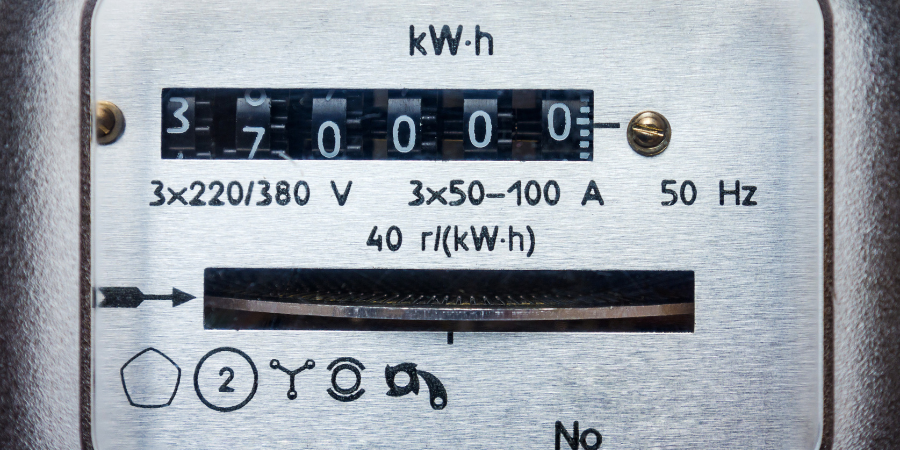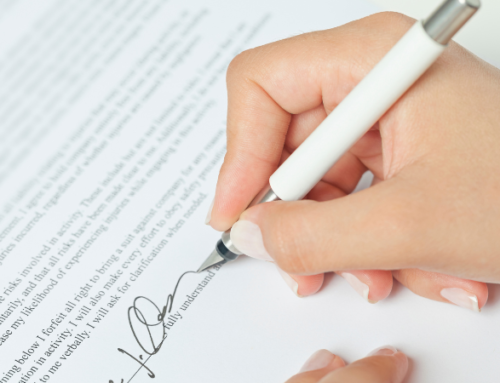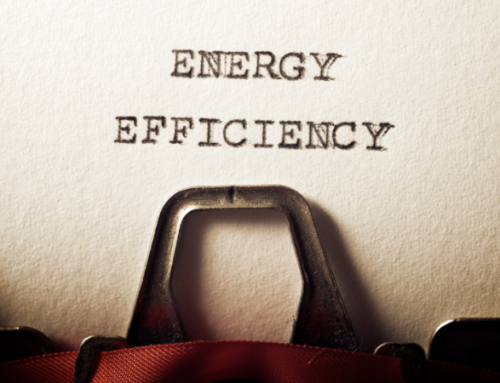Whether you are running a business, managing the finances of a corporation, or are an energy broker looking for ways to reduce costs for your business customers, learning how to forecast and calculate business energy consumption is a critical skill. In this article, we will explore the factors that affect energy consumption inside a commercial building, the average energy usage of specific types of equipment, electricity usage by industry type, how to calculate energy consumption at a business, and tips for reducing costs.
Why It’s Important To Calculate Your Business Energy Consumption
Calculating business energy usage is critical for controlling costs. And, whether you are thinking about installing an energy efficiency plan for your organization, or switching energy suppliers in a deregulated state, it’s always best to start with your total energy consumption. Let’s look at some of the scenarios where calculating energy usage is imperative.
Energy Efficiency Projects Require Energy Usage Calculations
In today’s climate, there are several different types of energy efficiency solutions to help businesses reduce peak demand and energy costs. From LED lighting solutions for businesses to demand response programs, there are many effective ways to reduce commercial energy expenses. However, having a baseline of the energy consumption at your business is important before partaking in an efficiency project so that you can determine if the project was successful. In order to do this, you must develop a plan to calculate consumption.
Energy Usage & Switching Retail Energy Suppliers
Next, if your business is located in a deregulated energy state, then you can save handsomely by switching to a retail energy supplier. But, in order to get the lowest energy rate for your business, you need to first start with your usage patterns.
Did you know that if your building has a steady, efficient energy consumption pattern you can qualify for a lower energy supply rate? In fact, retail energy suppliers evaluate energy consumption by calculating a building’s load factor rating. The higher the load factor, the lower the cost for the retail supplier to supply your business. Learning tips for improving load factor can be crucial to finding a better rate.
Furthermore, some energy suppliers will quote lower rates when their energy contracts are tied to an energy bandwidth clause or allotment. In a bandwidth clause, you agree to use a certain amount of energy over a contract period, within a predefined range. In order to commit to a bandwidth energy contract clause, you must first be able to calculate your total energy consumption.
Hybrid Energy Supply Products
Finally, certain hybrid energy supply products, such as block + index contracts, and contracts that have capacity and transmission pass-through charges, allow customers to benefit from a reduction in energy usage. If you are able to shave your peak energy demand during summer months, or you can use less electricity during a given billing cycle, you could benefit from lower energy rates on a hybrid energy supply contract.
In fact, unlike fully-bundled fixed energy rates that include transmission and capacity costs, pass-through rates allow you to reduce these charges throughout the contract term.
Having tools to forecast energy usage and reduce consumption at the right times can be very beneficial to you financially.
What Consumes The Most Energy In A Business?
Not all businesses are the same and a lot goes on inside the walls of a company. With that being said, there are many factors that ultimately affect what consumes the most energy at a business. Let’s explore some of them below:
Business Type Matters
First and foremost, the type of business, and its specific operation, play an important role in total energy usage. A manufacturing facility is going to use much more electricity and natural gas than a small retail store.
Equipment and Motors
Next, similar to business type is the actual equipment and motors inside the facility. A processing plant might have large machines that consume lots of electricity, while an office building only has lighting, HVAC, and computers.
Hours Of Operation
The hours a business is open or operating also influence total commercial energy consumption. A 24-hour restaurant is going to use more energy than one that’s simply open 10 hours a day.
Employee Habits
Employees who are not aware of their energy usage habits can waste a lot power in a facility. Simple things like leaving bathroom lights on and forgetting to turn off the AC in unoccupied rooms can drastically increase energy usage. Educating employees to be more energy-conscious can help you save.
Weather & Business Location
Weather affects energy usage and prices more than we might think. If you own a business in a very cold climate, you might need to use more natural gas to keep the building warm. And vice versa, buildings in Phoenix, Arizona will consume much more electricity cooling than those in milder climates.
Electricity Usage By Equipment & Industry Type
One of the main factors that drive energy consumption in a commercial building is the total makeup of the equipment and motors. According to the Department of Energy, the average number of kilowatt hours (kWh) per square foot for a commercial building is 22.5. The list below outlines the average kWh usage per square foot for each type of commercial equipment.
| Motor Type | Avg. kWh/sqft |
|---|---|
| Refrigeration | 8 kWh/sqft |
| Lighting | 7 kWh/sqft |
| Cooling | 3 kWh/sqft |
| Heating | 2 kWh/sqft |
| Ventilation | 2 kWh/sqft |
| Hot Water Heating | 0.5 kWh/sqft |
As the equipment makeup of a building is usually determined by the industry in which the business operates, let’s explore the average energy by industry sector.
| Industry Type | Avg. kWh/sqft |
|---|---|
| Manufacturing | 95 kWh/sqft |
| Food Service | 56 kWh/sqft |
| Cold Storage | 25 kWh/sqft |
| Retail | 23 kWh/sqft |
| Office | 15 kWh/sqft |
| Dry Warehouse | 9 kWh/sqft |
How To Calculate Business Energy Consumption & Costs
Electricity in a business is measured in both kWh and kW. When looking at the anatomy of an electric bill, you might notice that energy supply charges are often billed and measured in kilowatt-hours (kWh), while energy delivery charges are often measured and billed in kilowatts (kW). Let’s explore how to calculate both units of energy consumption in more detail so you can accurately predict energy costs for your business.
Calculating Kilowatt Hours (kWh)
Kilowatt-hours are the common unit of energy to determine the total amount of usage in a building. And, since each motor or piece of equipment has a watt-rating, calculating kWh usage is quite simple.
Use the formula below when calculating kilowatt-hours:
(total watts x hours) / 1000
Remember, 1000 watts equals 1 kilowatt, and since electricity usage is billed in kilowatt-hours, we must first determine the total amount of watts or kilowatts consumed.
For example, let’s assume that we have ten total motors in a building with a total watt rating of 3,000 watts.
And, let’s assume that those motors are running 10 hours per day for 30 days per month.
Using the equation above, we have:
(3,000 watts x 300 hours) = 900,000 watt/hours
And in order to convert this into kilowatt hours, we simply divide by 1,000:
(900,000 watt/hours) / 1000 = 900 kilowatt hours
Next, to calculate our total electricity supply costs for any given period, we can simply multiply the total kilowatt hours by our supply cost.
If you do not feel like doing the math yourself, use our handy electricity supply cost calculator:
Calculating Kilowatts (kW)
Calculating kilowatts (kW) is much more straightforward. Since the total kW your building uses is measured by its peak demand during any given billing cycle, simply adding up the wattage of all motors that will be running at the same time will give you your total kW.
For example, if you know that you have 10 motors running at any given moment. And, if you know that the total rating of those motors is 300,000 watts, then you can assume that will be your peak demand for the billing period.
Remember, 1,000 watts = 1 kilowatt, so we need to divide by 1,000. Using the above example, the equation to determine peak kW is:
(300,000 watts) / 1,000 = 300 kW
Kilowatts are important to forecast because they determine the other half of your electricity bill, utility distribution, or delivery costs. Each utility company calculates its delivery costs using a published rate tariff. You can find yours online at your local utility’s website. Each rate tariff has a fixed dollar amount associated with each kW of demand in any given billing period.
Tips For Reducing Commercial Energy Consumption
Now that you have a good grasp on calculating energy consumption, let’s explore some ways to reduce your energy usage so you can save on your utility bills. Each of these tips can have a positive impact on reducing your total energy footprint.
Hire An Energy Broker
Hiring an energy broker can drastically reduce your energy consumption. Not only do energy brokers understand how energy usage affects commodity rates, they can also help you implement strategies to improve your usage profile. After all, an energy broker wants to find you the lowest energy prices for your business, so they are incentivized to help you reduce consumption.
A reputable energy broker will also have several other services to offer outside of brokering traditional energy supply agreements. For example, Diversegy energy brokers are able to offer their customers LED lighting retrofits, demand response, and even commercial solar installations.
Install Third-Party Electric Meters
There are several electricity monitoring and metering devices available today. Some of these energy usage sensors can be installed on individual pieces of equipment or at the electrical panel box. Electric sub meters allow you to monitor energy consumption at a granular level in your building. Having energy monitor devices installed will also allow you to respond in real-time when a single piece of equipment is malfunctioning and using energy outside of its normal range.
Stagger Motor Schedules
If you are in the habit of running all of your equipment at once or even turning everything on in the morning when you open your shop, staggering motor start times can reduce your total peak energy demand. This is a simple practice to implement. Do some research on the meter reading interval (most smart meters read consumption every 15 minutes), and make sure that amount of time passes before you turn on the next set of motors.
In addition, if you happen to be on a hybrid energy supply product, such as an on-peak/off-peak electricity plan, then you can benefit from staggering motor schedules. For example, if you pay a reduced rate for electricity consumed after 7 PM, then shifting certain production to off-peak hours can save you money.
Need Help Controlling Energy Consumption At Your Business?
Our energy professionals have over 100 years of combined experience managing energy costs for our commercial and industrial customers. In fact, through our family of energy companies, we can offer a comprehensive energy offering to help reduce business energy consumption while finding lower rates for energy supply. Contact one of our team members today so we can evaluate your usage profile and develop a plan to help you save.



